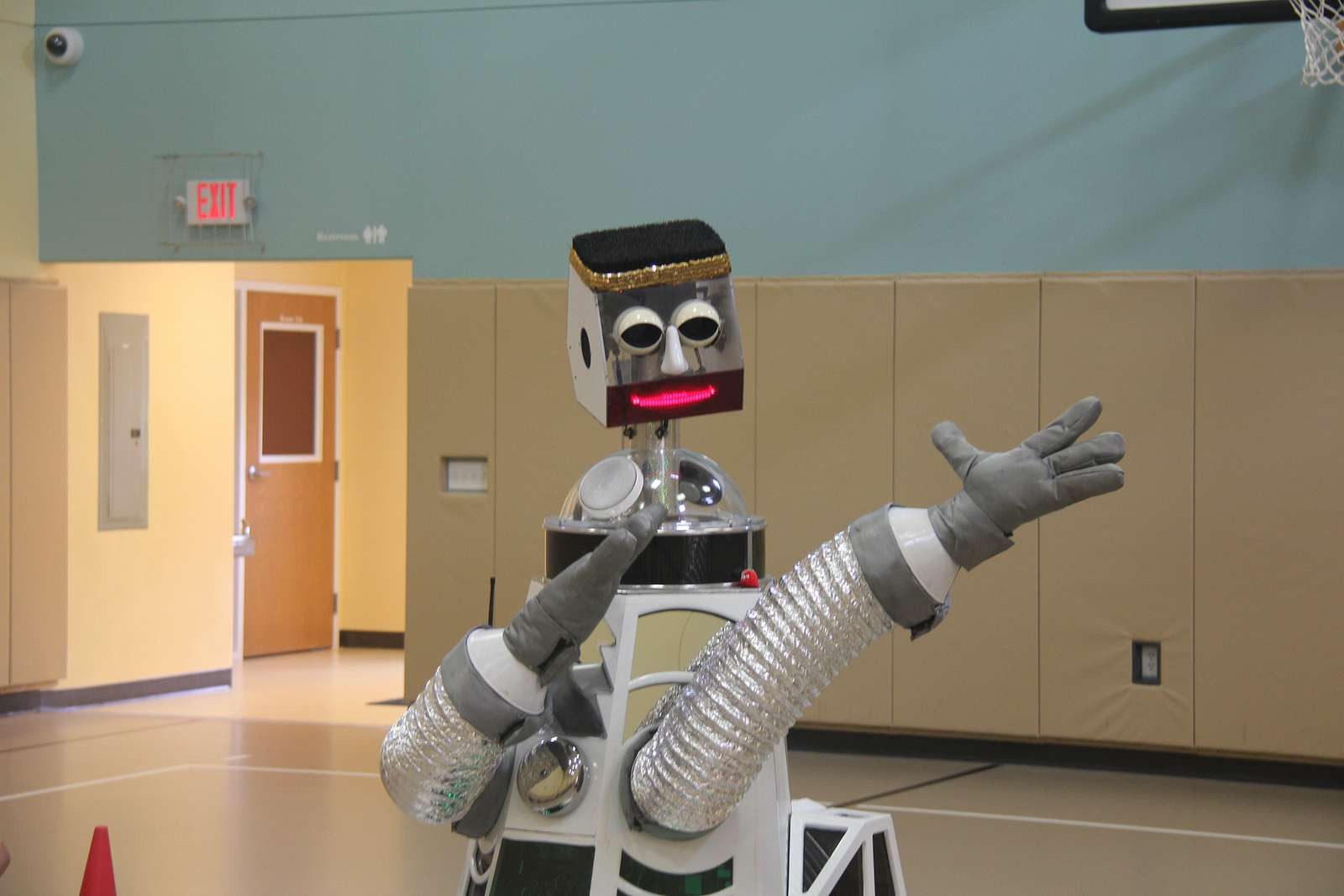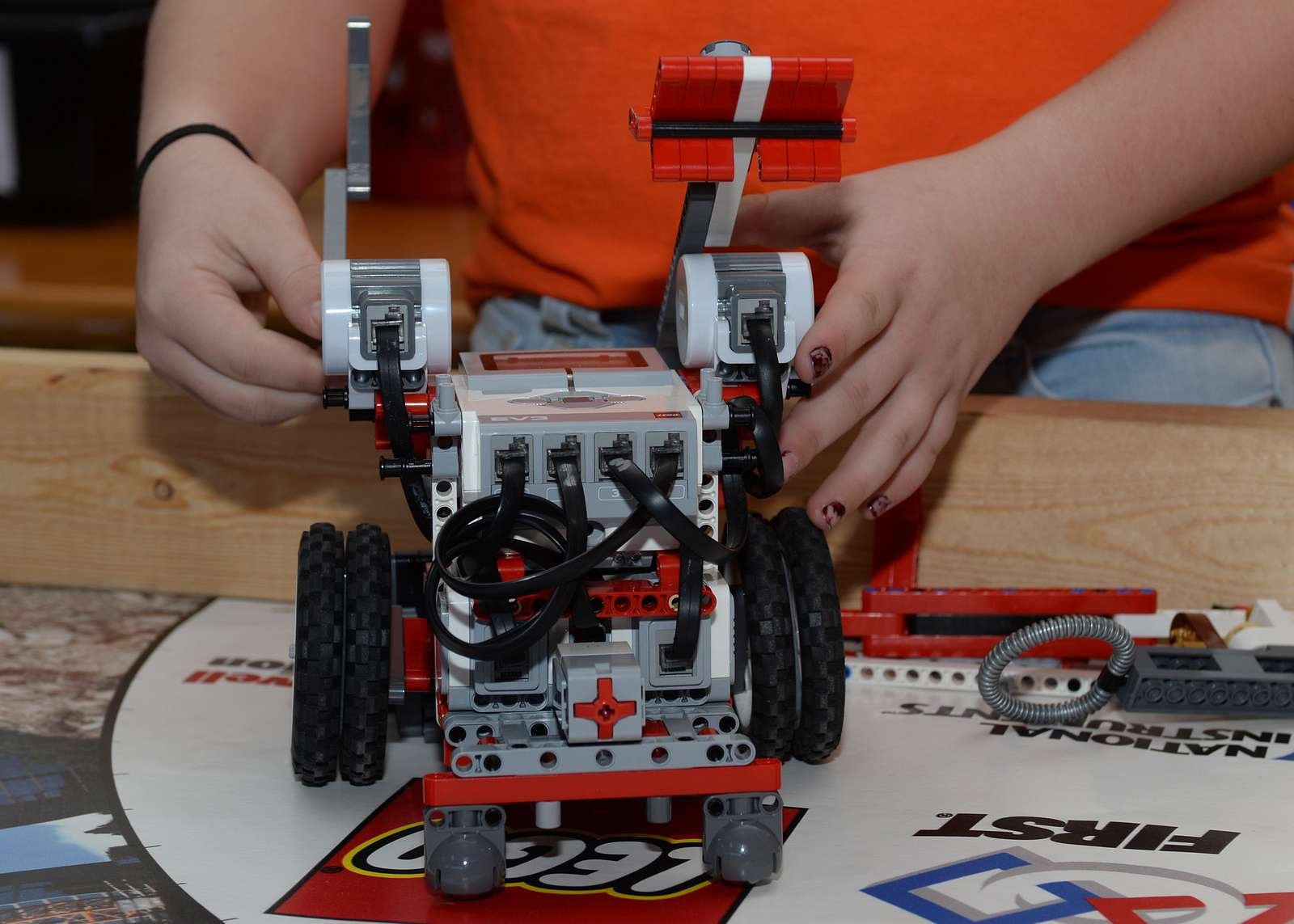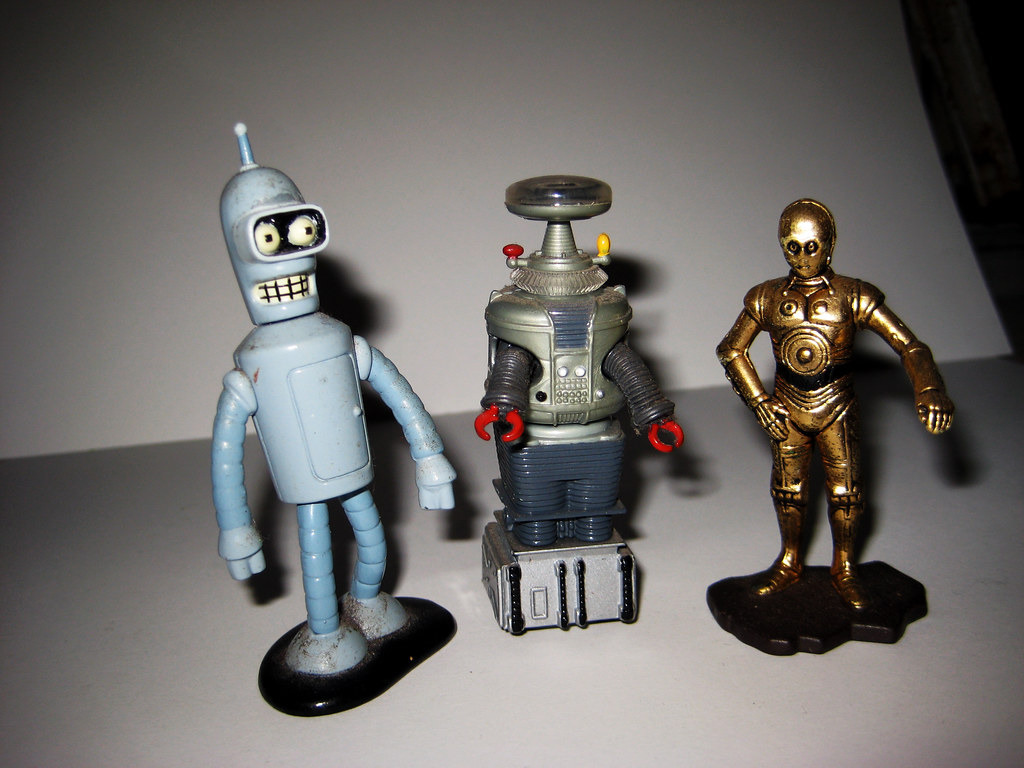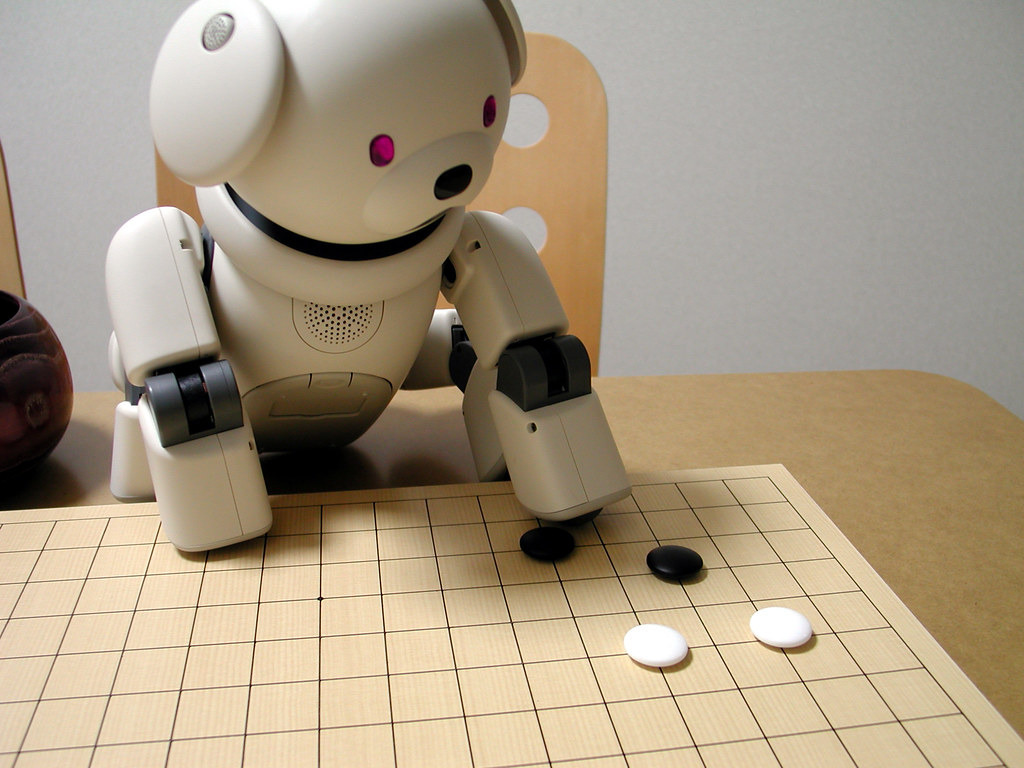Building a robot is easier than you think. With some electronics and computer programming skills, you can develop your robot models to perform simple tasks.
If you are curious about making a robot, prepare some necessary tools and follow the instructions in this article.
Here is basic information to build a robot for beginners. Imagine a robot like any familiar creature, and follow the simple steps below.
1. Sketch and tool preparation
In this preparatory step, you will need a sketch and the necessary input tools.
The sketching step is significant because you will have to determine what features are on your robot.
The most accessible and most popular robots are line followers, which can be autonomous and avoid obstacles. Or you can also build a robot model that can carry and move objects as you like.
Once you have determined the type you want to make, prepare all the necessary tools. The robot will have to get data from the environment to meet your needs.
Here are the standard tools you need to make the most efficient robots:
- Microcontrollers and dual tablets
- Controller or motor
- Low voltage source
- Electronic sensor
- 4-wheel or 2-wheel drive and transmission
- Mechanical components
- Connectors, wires, and welding devices
- The cover material and mainboard
- The raw electrical and programming board
- 3D machine for printing
A line follower robot will need sensors to build a moving route and avoid obstacles. If you want this robot model, prepare an infrared or color sensor.
To create a simple robot, you also need to prepare some other materials such as batteries, vibration motors, glass tape, glue, paper clips, and clothes hangers.
2. Step-by-step guide
Once you’ve prepared all the necessary tools, you must be eager to build your first robot. And here are the basic instructions for creating the simplest robot with high complexity.
Simple robots

- With a super simple robot for beginners, open your clothes hanger, then clip the motor in the middle. After that, cut and press the paper clips to bend them into the legs.
- After this step, you must stick them under the clothes hanger. Now, fix the battery to the motor with adhesive tape, and you have a simple robot.
- The paper clip moves when the motor runs, and you have a moving robot.
- You can add googly eyes or antennas to add personality to calm people.
- In addition, for the robot to be complete, prepare some materials such as cardboard or plastic to make the outer body.
Complicated robots

If you want a complex robot model that can do more tasks, try following the detailed steps below:
- Design: You will need a sketch for the robot design with different software and hardware.
- Prototyping: Next, optimize your model and test its intended features and functionality.
- Hardware Selection: You can select motors, hardware, sensors, and batteries for stable robot operation.
- Assembly: Connect components using prepared tools and mainboard and check secure connections.
- Software installation: Install the control software on the computer and standard operating systems such as ROS or Simulink.
- Code: Write code to control the robot’s movements, behavior, and interactions with its environment.
- Modifications and tweaks: Make code and hardware adjustments to improve the robot’s performance.
3. Robot programming tips
Programming is necessary to build complex robots to complete tasks without human intervention. Computer programs, from simple to complex, are aimed at helping the robot understand the commands and user requests.
You can write instructions that tell the robot what to do in various programming languages. Yet, for starters, C/C++ is worth learning the language.
Another tip to help you start programming robots more smoothly is to use the raspberry pi. The only problem is using Python, so you will need to understand basic Python principles before proceeding with the raspberry pi.
Finally, to improve your programming skills, take a tutorial course. There are many forms of learning to choose from. Especially if you are a busy person, try to find online courses.
You can easily find practical courses on machine learning and AI, using raspberry pi, and building and programming your first robot.
Overview of Robot
Robots are no longer a strange concept. However, do you understand what a robot is and its history? Below is information about the robot’s history.
History
Regarding robots, you can immediately think of screws and metal machines shaped like humans. However, in reality, in the first appearance, the robot does not have the same shape as above.
The term robot was first available in 1921. And the play Rossum’s Universal Robots considers the object an inconvenient working tool.
Some scientists even think that the term robot first appeared in 3000 BC. The ancients worked to make mechanical devices that could accomplish heavy tasks.
However, it was not until 1954 that the first digital robot was officially available in use. This first robot is called Unimate and can accomplish many tasks in the industrial field.
After many years, robots are constantly being improved and possess many advanced technologies. Currently, robots are physical machines that can perform many tasks. The most innovative devices can sense their surroundings and use algorithms to plan and complete tasks without human intervention.
Modern robots are not simply rigid physical machines with built-in screws and programs. It can also learn to explore and interact with its surroundings.
Are robots a significant threat?
Robots appear quite a lot in science fiction books and movies. And many of those works are about robotic rise and danger to society. Although there is a particular threat to human life, the robot dangers are not like in movies or fiction stories.
A common fear in this era is that robots store users’ data. For example, when using a home automation device to connect to the Internet, the virtual assistant Alexa or Google Home will collect data and record user preferences.
It is a way for virtual assistants to adjust intelligent devices to optimize the user experience. However, in some cases, you should be careful with your data so that your data does not become unsafe.
In addition to data security, many fear robots will dominate the job market.
Multi-tasking robots are what the World Economic Forum has predicted. Its ability to outperform humans at many basic tasks with minimal error. Therefore, it is not surprising that robots will replace many workers in the future.
However, according to some reports, machines, algorithms, and robots will create 97 million new jobs. Robots will remain a development area in the future. It does threaten some problems in life.
Robot Main Parts

There are different types, such as humanoid robots and virtual robots. However, in general, they all have the following main parts.
Robot body
The robot’s frame can be like its skeleton. The chassis will create enough space for all the sensors, power supply, and cables. This frame will also be quite sturdy to hold its total weight.
For robots that move frequently, the chassis will also have to provide good mechanical support for all components.
Sensors
Sensors will help the device detect environmental characteristics and changes and convert them into signals. Sensors are critical when it comes to the connection between physics and electronics.
There are many sensors you can choose from for your robot. With a temperature sensor, the robot will sense and process information related to temperature.
Meanwhile, the pressure sensor will feel the pressure, and the infrared sensor will detect the infrared ray.
The brain
The data from the sensor will be worthless if the robot does not have an information processing unit like a brain.
The simplest models will have a resistor, transistor, and capacitor circuit board. These simple details drive logical decisions. The robot can handle more complex calculations if an additional microcontroller is installed.
How Does A Robot Work?
There are many robots with different shapes and sizes. Yet, they all have some standard parts like sensors and processors. So, the way it works is also similar.
Most robots need access to a power source to function. Most portable machines will use batteries. Meanwhile, heavy machinery models will need a separate power generator or power source.
The robot’s body is also an essential part of how it works. The robot’s body with wheels and antennae will help them get the job done quickly.
To function smoothly, the robots also need to receive efficient programming. Complex algorithms will depend on the task the robot needs to perform.
They will then need to be assembled, connected to the power supply, and programmed. Once that’s done, engineers will test their product in a real-world environment to detect and fix bugs.
Robot Type

Robots with human-like shapes are the most familiar images. However, there are many other types with particular conditions that you should consider. Here are the most common types and their applications in daily life for your reference.
Social robots
These templates can communicate and interact with humans. They can answer simple questions and read the user’s facial expressions or movements.
For example, Alexa is an artificial intelligence robot that can respond to a user’s voice commands. It can play music on demand, set alarms, adjust smart devices in the home, and more.
In addition to Alexa, Cozmo is another famous social robot. It can remember the user’s name with the ability to communicate and support entertainment and education.
Collaborative robots
Unlike social robots with solid feedback and user interaction, collaborative robots are more tedious. Most of these robot models are to perform repetitive, supportive tasks for production workers.
These robots often appear in hazardous construction sites. In this environment, the robot works quite effectively, minimizing risks in the workplace.
Sawyer and ABB Yumi are the two most widely used collaborative robots today.
Sawyer is flexible, easy to use, and highly accurate. This type can perform tasks such as machine maintenance and circuit board testing.
Meanwhile, ABB Yumi has only one arm. However, it handles very well in less safe working environments due to its good grip and relatively accurate operation.
Consumer robots
Consumer robots are one of the most common robot types in daily life. These robot models are relatively inexpensive and suitable for objects and purposes.
For example, you can find quite a few automatic vacuum cleaners. These robots often come with smart sensors, house mapping, and cleaning optimization. As a result, you have a house that is always clean with little intervention.
Now there are some types with pet-like shapes. These machines simulate pet actions and emotions, serving well for human entertainment needs. You will find other robots like farming, transportation, and medical robots in everyday life.
FAQs
Can a 14-year-old learn robotics?
There is no specific age requirement for those who learn about robotics.
Anyone curious and who wants to learn about this field can start learning robotics. 8-14 is the most appropriate age to get the first robot model.
Does NASA build robots?
NASA builds many different types of robots. The main task of these robot models is to assist astronauts in completing dangerous jobs related to radiation and micrometeorites.
Is robotics a stressful job?
Those who work in the robotics business report a high level of satisfaction. Yet, the number of working hours and workload in this field are enormous.
IS robotics very hard?
Robots are a complex field. However, if you have the passion and willingness to learn, you can start building robots immediately.
Is IT good to study robotics?
Those with a background in AI or design will quickly master robotics.
Conclusion
Above are all the instructions on how to make a robot. It makes it easier and faster to build your prototypes. I wish you success in applying the instructions and constantly being creative to go further in this field. Thanks for following!

